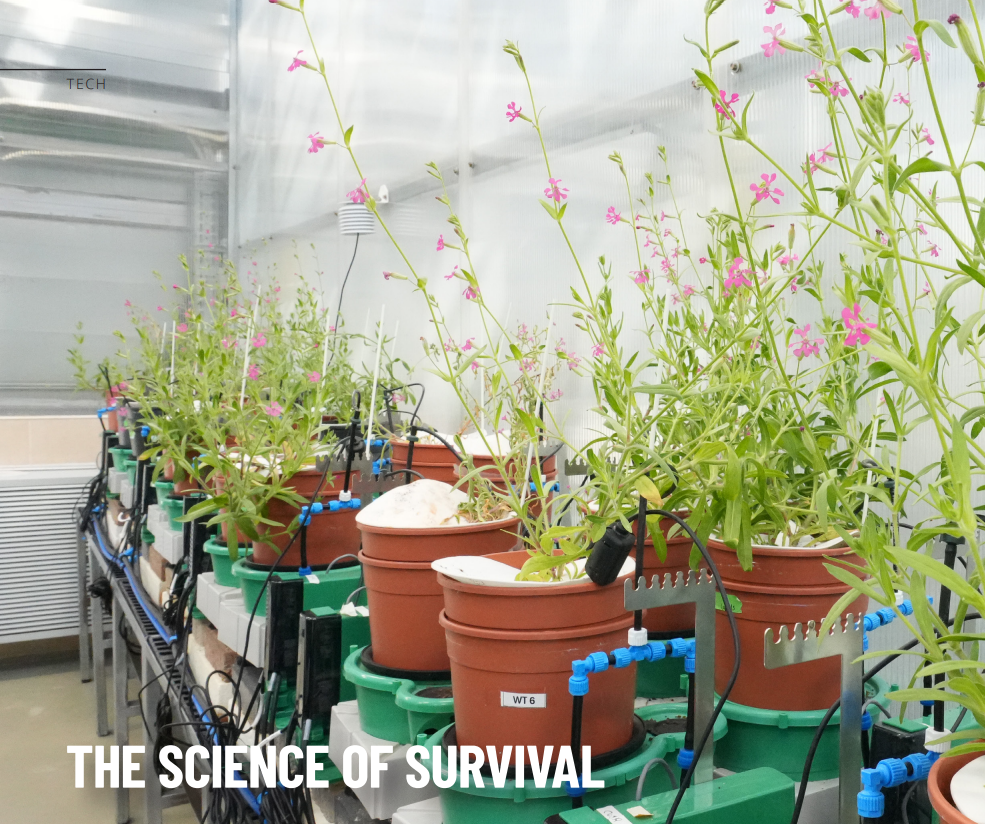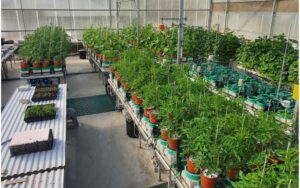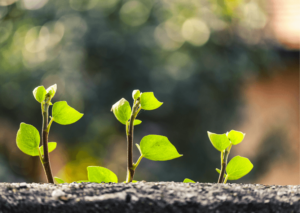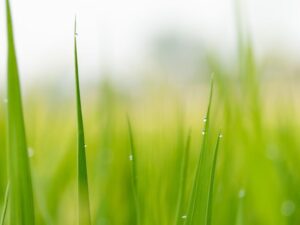As the global climate grows increasingly erratic, the race to understand plant stress and resilience has never been more urgent. At the forefront of this effort is Plant-Ditech, an Israeli technology company spun out of the Hebrew University, whose groundbreaking system – PlantArray – offers a real-time, high-resolution screening of plant physiological traits and, thus, its behaviour. Initially developed for plant science research, this technology is used by researchers in research institutes and the R&D divisions of academic and commercial companies to learn how plants dynamically respond to environmental stresses that constantly affect them. The system is suitable for a wide variety of plants and soils. 
THE ORIGIN STORY: A CONFLUENCE OF SOIL AND PLANT SCIENCE Plant-Ditech was founded over a decade ago by two academic scientists: one a plant physiologist, the other a soil and water specialist. Their complementary backgrounds gave rise to an innovation that bridged their disciplines. The central driver for the company, as Keren Moshelion, CEO, explains, was climate change. “They needed to find faster, more precise ways of evaluating plant stress under increasingly complex environmental conditions,” she says. “Traditional methods just couldn’t keep up.” Their shared insight was that many of the phenotyping tools Plant-Ditech’s PlantArray turns real-time data into resilience insights – from lab-based trials to commercial ornamental production. available today – such as manual or photographic systems – are simply too slow, imprecise, and fragmented to deliver high-quality, real-time, gap-free scanning and comparison. What if, they asked, “it were possible to monitor plants in real time, simulate real-world stress conditions, and compare multiple plants simultaneously within the same experiment?” 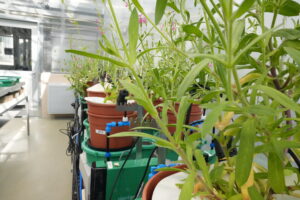
GRAVIMETRIC PRECISION: WEIGHING PLANT PERFORMANCE At the heart of PlantArray is a gravimetric system – essentially a highly sensitive weighing scale – that continuously tracks changes in plant weight. Together with atmospheric and soil sensors, this allows researchers to measure transpiration (water loss through leaves), water uptake by roots, and plant biomass gain and learn their water-use efficiencies, all dynamically and non-invasively. “Whole-plant transpiration is our key measurement,” says Keren. “By irrigating at night when plants are less active and continuously weighing the plant throughout the day, we can precisely calculate how much water is being lost through the leaves—and, therefore, how the plant is functioning under stress. Even stomatal conductance – a key measure of how gases like CO2 and water vapour pass through a plant’s leaf pores – is inferred through advanced algorithms that normalise transpiration against biomass and environmental conditions, such as Vapour Pressure Deficit (VPD). Unlike traditional methods, which often involve destructive sampling or isolated leaf readings, PlantArray captures the behaviour of the entire plant – both shoot and root -providing a holistic and representative analysis.
BEYOND TRADITIONAL METHODS The contrast with traditional experimentation is stark. In the old model, scientists might take measurements of 100 plants over the course of a day, during which the environment—temperature, humidity, light—would inevitably shift. These changes introduce inconsistencies in the results. With PlantArray, all plants are monitored simultaneously, under identical conditions, up to 500 times a day. “This kind of resolution is simply impossible manually,” says Keren. “And the difference it makes is enormous. Not only do you see how plants suffer under drought, heat, or salinity, but you can also see how well they recover. All in real time. That recovery ability is vital for understanding yield potential and resilience.”As a result, the system has been rapidly adopted by top research institutions, as well as by commercial R&D divisions in various sectors, including biotechnology and seed breeding, food (e.g., Mars Wrigley), and chemical or biostimulant companies (e.g., ICL)
SIMULATING THE REAL WORLD – ACCURATELY The system is capable of automatically simulating a wide range of abiotic stresses, such as drought, salinity, temperature swings, and even flooding, while recording the plant’s physiological response in real-time. Recently, Plant-Ditech has expanded the system’s capabilities with add-on sensors to capture leaf temperature (IR), stress indices (NDVI), and detailed soil parameters, such as pH and electrical conductivity (EC). Even more impressive is the system’s ability to compress research timelines. “What used to take six months can now be done in four weeks,” Keren explains. “You can run multiple test cycles in the time it would have taken to complete just one.” 
RELEVANCE TO ORNAMENTAL HORTICULTURE While initially designed for laboratory research, PlantArray’s potential extends far beyond the lab. For the commercial floriculture sector, often overlooked in discussions of plant stress, this technology offers a powerful diagnostic tool. “When potted plants or flowers leave a nursery, they pass through a supply chain that can be quite traumatic,” says Keren. “The light, humidity, and water availability all change dramatically – from greenhouse to truck to retailer to consumer. Even if those stresses aren’t visible immediately, the plant is already suffering.” By simulating this journey within the PlantArray system, growers can identify the precise points where stress is most severe, compare varietal responses, and even finetune handling procedures to reduce damage and extend shelf life. “You can effectively run a dress rehearsal for the plant’s journey to market”, Keren adds. This insight could be gamechanging for breeders and producers who want to selectvarieties not only for colour but also for extending shelf life, treatment optimisation (e.g., water and fertigation), transport resilience, and recovery. ‘WHAT USED TO TAKE SIX MONTHS OF TRIAL AND ERROR, WE NOW LEARN IN FOUR WEEKS, WITH 500 DATA POINTS A DAY PER PLANT’
A PLATFORM FOR THE FUTURE Plant-Ditech continues to innovate. “We are always adding sensors and improving algorithms,” says Keren. “And while we’re focused now on B2B and research markets, there’s growing interest from other sectors – including irrigation and commercial agriculture – who want to bring this level of insight into the field.” She also believes the next wave will be fueled by AI and automation, replacing what she calls the “eye test” still commonly used bybreeders and growers. “Today, much of plant research relies on visual measurements, which inevitably lag behind physiological ones. Think of it like a smartwatch that measures your heart rate and blood pressure – the system can detect the plant’s ‘vital signs’ long before it shows any visible signs of stress.”
PLANTARRAY CAN REVOLUTIONISE PLANT SCIENCE PlantArray represents a profound shift in how we observe and understand plant life – not just in response to climate change but in everyday horticultural practice. By bringing scientificgrade monitoring into the hands of researchers and potentially commercial growers, Plant-Ditech is closing the loop between innovation and application. For horticultural professionals, it offers a glimpse into a future where plant stress isn’t just guessed at after the fact but seen and quantified in real-time. In the age of climate disruption and logistical complexity, that insight could make all the difference between a thriving plant and one that fails to thrive.

